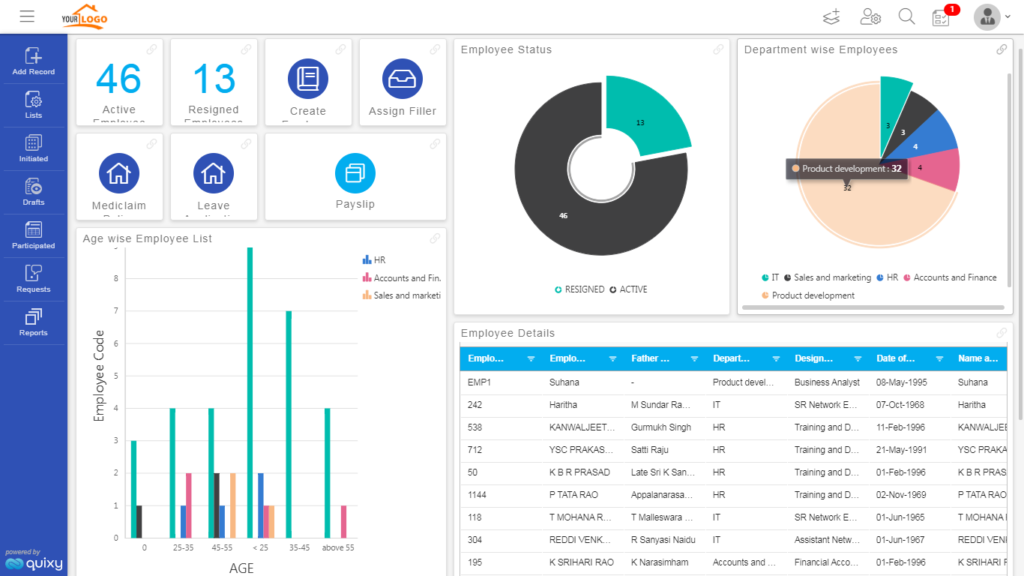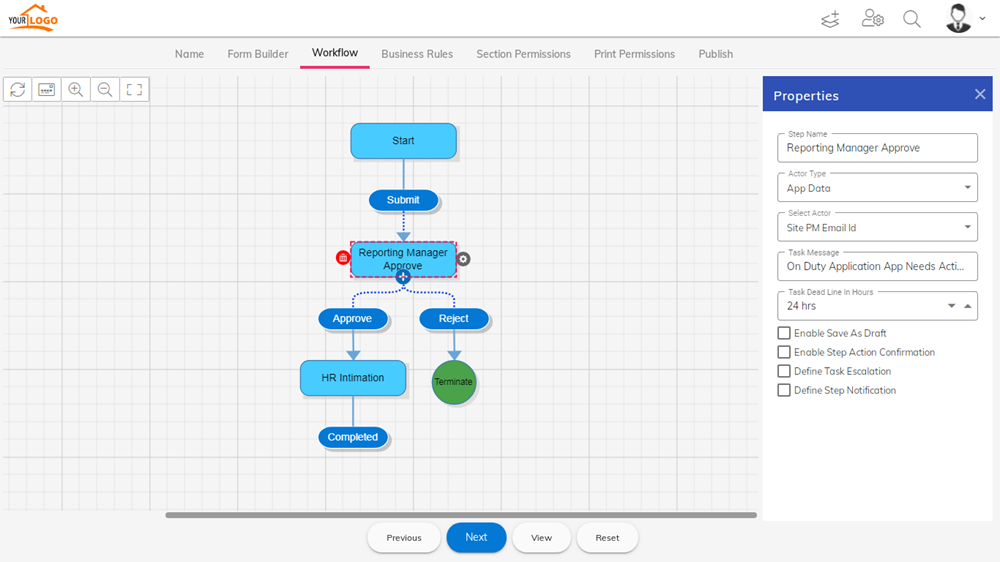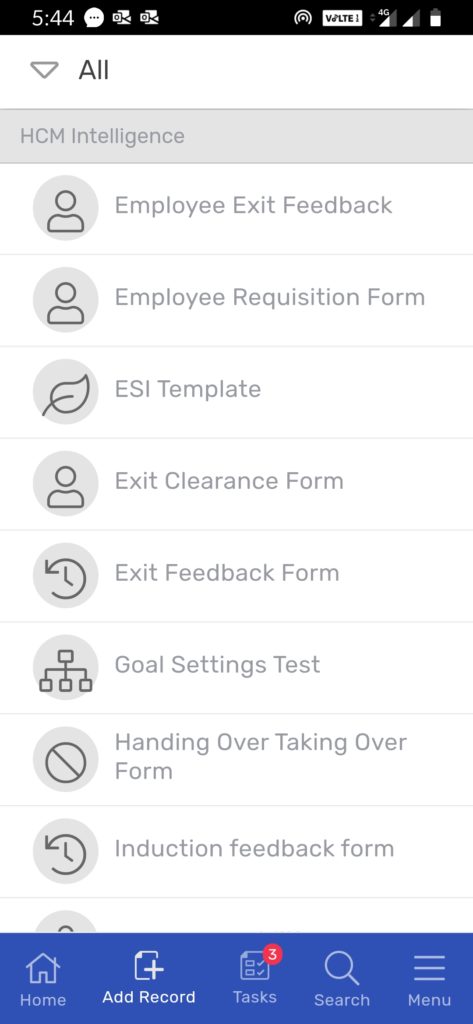
Everyone in the business world is talking about Digital Transformation Tools, Digital Workplaces, and Business Continuity. But what is the connection between them? Is the hype worth it? Let’s explore.
The digital revolution is upon us, and businesses of all sizes are scrambling to adapt. But where do you even begin? Fear not, intrepid explorer! This blog is your one-stop guide to navigating the vast landscape of digital transformation tools. We’ll equip you with the knowledge to identify the essential digitalization tools for your specific needs, explore their functionalities, and ultimately chart a course towards a more streamlined, efficient, and customer-centric future for your business. So, grab your virtual backpack, buckle up, and get ready to discover the transformative power of digital workplace technology tools!
What are Digital Transformation Tools?
Digital workplace tools are the software solutions and platforms that empower businesses to reimagine how they operate, deliver value, and connect with customers in the digital age. These digitalization tools help organizations modernize legacy systems, streamline operations, enhance customer experiences, and foster innovation—without the heavy lifting of traditional IT overhauls.
Think of them as the digital accelerators—they turn slow, manual, or disconnected processes into efficient, intelligent, and agile workflows.
From low-code no-code platforms and AI-driven analytics to cloud infrastructure, collaboration software, CRM systems, and automation tools, these technologies form the backbone of a company’s journey from digital ambition to execution.
Benefits of Digital Transformation Tools
Digital transformation tools have emerged as powerful enablers, helping businesses evolve, adapt, and thrive. Whether you’re a startup or an enterprise, embracing these tools can unlock new levels of efficiency, collaboration, and innovation.
Here’s a breakdown of the key benefits digital transformation tools bring to the table:
1. Streamlined Operations
Digital transformation tools automate repetitive tasks, eliminate manual errors, and centralize data—saving time and resources. From workflow automation to real-time dashboards, these tools empower teams to focus on high-value activities instead of chasing paperwork.
2. Better Decision-Making with Data
With integrated analytics and reporting capabilities, digital tools offer real-time insights into every part of your business. This allows for data-driven decisions, forecasting, and continuous improvement—giving you a competitive edge in any market.
3. Improved Customer Experience
At the heart of transformation is the customer. With CRM systems, AI chatbots, and personalized engagement platforms, businesses can respond faster, serve smarter, and build stronger relationships with their customers.
4. Agility and Innovation
Markets shift. Customer expectations evolve. Digital tools help you keep up. From low-code development to cloud-based collaboration, these technologies support rapid experimentation and scalable innovation—without overloading IT.
5. Stronger Collaboration and Communication
Hybrid and remote work models are here to stay. Digital tools break down communication barriers, enabling seamless collaboration across departments, time zones, and devices. Think shared digital workspaces, instant messaging, and integrated project tracking.
6. Cost Efficiency
While the initial investment may vary, the long-term gains are clear. Digital transformation tools reduce operational costs, minimize downtime, and increase productivity—delivering strong ROI over time.
7. Enhanced Security and Compliance
Modern digital platforms come with robust security protocols and compliance features, helping organizations protect sensitive data and meet industry regulations without constant manual oversight.
A Markets and Markets report predicts the digital transformation market will surge at a compound annual growth rate (CAGR) of 19.1%, reaching $1.275 trillion by 2026.
Why Do You Need Digital Transformation Tools & Technologies?
The world is moving fast—and if your business isn’t keeping up, it’s falling behind. Customers expect quicker service. Employees want smarter tools. Markets are constantly evolving. That’s where digital transformation tools and technologies come in.
They’re not just “nice to have.” They’re essential for survival and growth in today’s digital-first world.
1. To Stay Competitive in a Digital-First World
Your competitors are already digitizing—and chances are, your customers are expecting the same from you. Digital transformation tools help modernize your business processes, making you faster, more agile, and better equipped to meet changing demands.
2. To Unlock Efficiency and Automation
Manual processes slow you down and leave room for error. Tools like workflow automation, low-code platforms, and integrated CRMs allow your team to automate routine tasks, streamline operations, and focus on innovation and strategy.
3. To Make Smarter, Data-Driven Decisions
Every click, interaction, and transaction generates valuable data. Digital tools turn that data into actionable insights with real-time dashboards and predictive analytics—helping you make decisions that are backed by evidence, not guesswork.
4. To Empower a Hybrid and Remote Workforce
The way we work has changed. Digital technologies support collaboration across locations and time zones. From cloud platforms to virtual meeting tools, you can keep your teams connected, productive, and aligned—no matter where they are.
5. To Improve Customer Experience
Customers today expect personalization, instant support, and seamless service. Digital tools help you deliver just that—through AI chatbots, automated support systems, and personalized marketing powered by customer data.
6. To Innovate Faster with Less Risk
Want to launch a new service, test a new market, or change how your team works? Digital transformation technologies give you the flexibility to experiment and scale quickly, without the heavy costs or risks of traditional development.
7. To Enhance Security and Ensure Compliance
Modern tools come with built-in security features, data encryption, and compliance controls—helping you protect sensitive information and stay aligned with evolving regulations.
Bottom Line?
Digital transformation tools and technologies aren’t just about technology—they’re about enabling people, simplifying processes, and creating better experiences. Whether you’re aiming to grow, adapt, or lead, embracing digital transformation is no longer optional—it’s essential.
Key Digital Transformation Tools for Your Digital Workspace
In today’s dynamic business landscape, digital transformation is no longer optional – it’s essential for survival and growth. By embracing digital tools and strategies, businesses can streamline operations, enhance collaboration, and deliver exceptional customer experiences. Here’s a closer look at 10 key tools that can empower your digital transformation journey:
1. Meeting Software
Break Down Geographic Barriers and Foster Real-Time Collaboration
Gone are the days of expensive travel and inconvenient time zone juggling. Meeting software allows geographically dispersed teams to connect seamlessly, fostering real-time interaction and project progress. Features like screen sharing, collaborative whiteboards, and breakout rooms empower effective communication and brainstorming sessions, regardless of location.
2. Document Management System (DMS)
Tame the Paper Tiger and Unleash Information Accessibility
Struggling with overflowing file cabinets and version control chaos? A DMS centralizes and streamlines document storage, organization, and retrieval. Imagine a system where employees can easily locate the latest version of a document, ensuring everyone is working with the most up-to-date information. Robust search functionalities and permission controls further enhance information accessibility and control, leading to improved collaboration software and reduced errors.
3. Customer Relationship Management (CRM) Tools
Cultivate Deeper Customer Relationships with Data-Driven Insights
CRM tools transform customer interactions from scattered data points into a unified view. Businesses gain valuable insights into customer behavior and preferences by capturing interactions across various touchpoints – phone calls, emails, and social media. This data empowers businesses to personalize marketing campaigns, improve customer service experiences, and ultimately build stronger, more profitable customer relationships.
4. Customer Data Platform (CDP)
The Power of a Unified Customer View
A CDP takes customer data management a step further. It acts as a central hub, consolidating customer data from diverse sources like CRM systems, loyalty programs, and website analytics. This unified view provides a holistic understanding of your customers, enabling you to create targeted marketing strategies, personalize customer experiences across channels, and develop customer-centric products and services that truly resonate with your target audience.
Also read: Digital Transformation Demystified !!
5. Business Process Management (BPM) Software
Automate, Optimize and Conquer Operational Inefficiencies
Repetitive, manual tasks can bog down your team and hinder productivity. BPM software automates core business processes, streamlining workflows and freeing up valuable employee time for strategic initiatives. Additionally, BPM software allows for process optimization, identifying bottlenecks and opportunities for improvement. This translates to increased efficiency, reduced costs, and improved compliance with regulations, giving your business a significant competitive edge.
6. Enterprise Resource Planning (ERP) Software
Gain a Holistic View and Make Data-Driven Decisions
Imagine a centralized system that integrates all your critical business functions – accounting, manufacturing, supply chain management, human resources, and CRM. This is the power of ERP software. It provides a comprehensive view of your entire operation, enabling you to make informed decisions based on real-time data. Improved inventory management, optimized production schedules, and streamlined financial reporting are just a few of the benefits that ERP software can deliver.
7. Marketing Automation Software
Streamline Repetitive Tasks and Fuel Marketing Efficiency
Marketing teams are often bogged down by repetitive tasks like email campaigns, social media scheduling, and website traffic analysis. Marketing automation software takes the reins, streamlining these tasks and freeing up valuable time for strategic marketing initiatives. Imagine automatically sending personalized email campaigns based on customer behavior or scheduling social media posts across multiple platforms with a few clicks. Marketing automation empowers businesses to execute more focused and efficient marketing efforts, maximizing return on investment.
8. Content Management System (CMS)
Empower Teams to Create Engaging Content Without Coding Hassles
A user-friendly CMS empowers even non-technical teams to effortlessly create, manage, and publish website content. This translates to a more dynamic and up-to-date online presence, crucial for attracting and engaging customers in today’s digital world. Drag-and-drop functionalities and intuitive interfaces make content creation a breeze, while built-in SEO features can help your website rank higher in search engine results, driving organic traffic.
9. Data Analytics Tools
Uncover Hidden Gems in Your Data and Make Data-Driven Decisions
Data is the new gold, but only if you can unlock its potential. Data analytics tools empower businesses to collect, analyze, and visualize data from various sources, including customer interactions, website traffic, and sales figures. By uncovering hidden trends and patterns, businesses can make data-driven decisions that optimize marketing campaigns, improve product development, and identify new growth opportunities.
10. Collaboration Tools
Foster a Culture of Teamwork and Knowledge Sharing
In today’s collaborative work environment, fostering a culture of teamwork and knowledge sharing is essential. Collaboration tools provide a central platform for communication, file sharing, and project management. Features like instant messaging, video conferencing, and task management streamline team communication and ensure everyone is on the same page. Also, knowledge-sharing functionalities like shared documents and wikis empower teams to learn from each other and continuously improve.
Also read: Everything you should know about no-code development
Another key aspect that rules digital transformation is Keeping your team involved, which is crucial for a successful digital transformation. Transparency is key. Share the company’s digital vision and goals with your team, and explain how each role contributes to the bigger picture. Encourage open communication and feedback. Regularly solicit team input on new digital tools for business and processes and address any concerns they may have. Celebrate milestones together to maintain momentum and acknowledge everyone’s hard work. You can keep your team engaged and excited about the digital transformation journey by fostering a sense of ownership and purpose.
11. Project Management Tools
Project management tools are essential for businesses to effectively plan, organize, and execute projects. These tools provide a centralized platform for teams to collaborate, track progress, and manage resources. By streamlining workflows and improving communication, project management tools can significantly enhance productivity and ensure successful project outcomes.
12. No-Code Low-Code Tools
No-Code Low-Code Tools offer a significant advantage for businesses seeking to accelerate their digital transformation. By providing a visual interface and pre-built components, these platforms empower non-technical users to create applications rapidly and efficiently. This not only reduces development costs but also enables organizations to respond more swiftly to changing market conditions and customer needs. Also, No-Code/Low-Code tools can help businesses unlock the innovative potential of their employees by empowering them to build solutions that address specific challenges.
How Quixy Can Help You Keep Your Team Involved
Here’s where Quixy, with its Rapid app development capabilities and effortless management, can be a game-changer. Quixy’s no-code, low-code platform empowers teams to participate in digital transformation by streamlining process creation and automation. With Rapid Application Development, both technical and non-technical employees can easily build and deploy custom applications, workflows, and automations without needing extensive coding knowledge.
Quixy’s user-friendly administration tools allow your team to manage and make changes to roles and user permissions as your needs evolve. This ensures everyone has the right access to complete their tasks efficiently, fostering agility and a culture of continuous improvement.
This fosters a collaborative environment where everyone can contribute their ideas and expertise, accelerating the digital transformation process. Quixy’s intuitive interface and drag-and-drop functionalities make it easy for teams to adapt to new processes, ensuring a smooth transition and maintaining team buy-in throughout the journey.

Key Aspects of Digital Workspace Tools Setup
1. Streamlined process management
Over the past few months, business users in different departments at Quixy Co., i.e., HR, Finance, General Administration, Purchase, IT, Quality, PMO, Sales & Marketing, etc., have automated all their processes on the centralized web-based Quixy platform. Quixy has helped automate these repetitive processes using customizable forms, workflows, and business rules.
Most of these automated processes are now coming in handy since no paperwork or physical engagement is required for any day-to-day business operations.
The platform is being used to initiate any process and track work between people, streamlining all business operations. Users can view the status of all processes initiated by them, while process owners can review the status of all their processes in real time.
List of some of the processes that have been automated on the platform are listed below:
| Applications | Purpose |
|---|---|
| Company Wide | |
| Project Management | Create projects, assign team members, track progress, attach related files, and access time spent info from the Time sheets app |
| Task Management | Manage Task related to the project and track their progress |
| Meeting Minutes | Track minutes and action items from meetings |
| Document Library | Manage documents related to various functions and make them available to relevant stakeholders in one single place |
| Time sheet | Track time spent on various activities |
| Company Directory | Maintain company directory in single place for quick access for everyone |
| Personal To-Do | Create and track personal To-Do tasks to completion. |
| Indent Management | Raise and process indent requests |
| HR | |
| Employee Onboarding | Manage all tasks and checklist to ensure smooth on-boarding of new associates |
| Training | Manage organization-wide training including attendance and feedback from these sessions |
| HRMS and Payroll | Manage processes related to HR and Payroll including Leave Application, Payroll processing, etc. |
| Performance Management | Manage Quarterly and annual reviews for all associates |
| Candidate Application Tracking | End to end application tracking system for applications against open job positions |
| Employee Separation | Manage tasks related to employee separation including all clearance formalities and issuing relieving certificate |
| General Administration | |
| Travel Request | Manage the overall process from start to finish of the business trip including travel request by the employee and all the arrangements by the admin department |
| Trip Report | Submit business trip reports including decisions and open actions to follow up |
| Expense | Management Manage itemized expense reports along with attachments |
| Visitor Log | Record all visitor movement ensuring only approved visitors are allowed |
| Quality | |
| Policy and Procedure Library | Maintain the full list along with attachments for easy reference for all employees |
| Internal Company Survey | Conduct and report results for an internal company survey |
| Audit Management | Plan, execute and report on various quality audits |
| IT | |
| IT Help desk | Processing tickets and inquiries from users of in-house IT equipment and networks. |
| Inventory Management | Manage inventory related to IT |
| Incident Management | Report and manage IT-related incidents |
| Marketing and Sales | |
| Product and Services Database | Manage Product and Services Database |
| Prospects and Customer Database | Manage Prospects and Customer Database |
| Sales and Leads Database | Manage Sales and Leads Database |
| Social Media Content Calendar | Create and maintain Social Media Content Calendar |
| Event Report | Maintain event reports including learning and action items from the events |
| Quotations | Create and track quotations |
| Customer Service | |
| Support FAQ | Create and manage FAQ to respond to customer inquiries more efficiently |
| Customer Satisfaction Survey | Manage Customer Satisfaction Survey |
| Support Desk | Manage trouble tickets from customers |
| Product Survey | Manage product survey |
Also read: Business process management – The what, why, and how
2. Real-time project management
Teams use the Project Management and Task Management related apps created on the Quixy platform to plan, control, execute, and align project activities and tasks to meet project objectives. Projects are being managed with neatly organized dashboards for real-time actionable insights.
Team members can view and update assigned tasks and enter timesheets against each task. Project Managers can view the status of all tasks. Further, real-time reports help Managers foresee and address bottlenecks on a single screen without having to ask IT teams to create it for them. Teams that were hitherto using other products like Jira, Asana, Monday, etc., have either transitioned their processes to the Quixy platform or are in the process of doing so.

3. Effective collaboration
When working remotely, collaboration and communication between the team members is the most important factor to ensure smooth operations. Quixy enables various users to collaborate effectively in their business processes through the power of automated workflows on a system designed for less noise and more work.
Daily stand-up meetings and brainstorming sessions are enabled through Microsoft Teams video calls. Teams are also being used for one-on-one or team-level discussions through various channels that have been created on the Teams platform by each department.
All customer and vendor calls are being done through Zoom, which also offers the advantage of saving recordings of the calls for later reference.

Policies have also been put in place to have everyone join at least 1-2 video-enabled calls during the day so that all participants see each other. Team-level chit-chat channels have been created to enable casual out-of-office discussions between team members during the day.
4. Smooth workflow management

User-defined workflows in Quixy are bringing together people, processes, and data to track, manage, and solve all types of cases, from helpdesk tickets to employee onboarding, leave applications, and bug tracking.
5. Complete mobility
The lightweight web-enabled interface and all the tools’ Android and iOS apps allow users to work from anywhere, across any device, and continue to be productive.


📈 Measuring the ROI of Digital Transformation Tools
ROI isn’t just about dollars saved—it’s about impact. Here are key ways to measure ROI from your digital initiatives:
1. Operational Efficiency Gains
Track improvements in productivity and time savings.
- How much time are employees saving due to automation?
- Are manual processes reduced or eliminated?
- Are you getting more done with the same or fewer resources?
2. Cost Reduction
Identify areas where the tool has replaced or reduced existing costs.
- Lower software maintenance or IT overhead?
- Fewer errors or compliance penalties?
- Reduced reliance on third-party vendors?
3. Employee Productivity and Engagement
Digital tools should empower your teams.
- Are users adopting the tool easily?
- Are employees collaborating better and faster?
- Has output improved per person?
4. Customer Experience Metrics
A digital-first approach should improve CX.
- Are response/resolution times faster?
- Is customer satisfaction (CSAT/NPS) rising?
- Are you seeing better retention or fewer complaints?
5. Time-to-Market Improvements
Look at your innovation pace.
- Can you launch products/services faster?
- Can internal changes be deployed in days instead of weeks?
6. Revenue Growth
Though indirect, tools often enable new revenue streams or expansion.
- Are you reaching new customers?
- Is customer lifetime value increasing?
- Are sales teams closing deals more efficiently?
👉 Pro Tip: Set benchmarks before implementation and measure again at regular intervals (30, 90, 180 days) to track ROI evolution over time.
✅ Choosing the Right Digital Transformation Tools for Your Business
Selecting the wrong tool can derail your transformation journey. Here’s how to make a smart choice:
1. Align with Your Business Goals
Don’t chase trends. Identify what your business truly needs—be it automation, customer service improvement, or workflow optimization—and find tools that address those needs directly.
2. Consider Scalability and Flexibility
The right tool should grow with you. Choose platforms that can handle increased workloads, users, and integrations as your business expands.
3. Prioritize Ease of Use and Adoption
Tools with steep learning curves slow down adoption. Look for user-friendly interfaces, low/no-code configurations, and robust onboarding support.
4. Evaluate Integration Capabilities
Your digital tools shouldn’t operate in silos. Ensure they integrate well with your existing systems like CRMs, ERPs, HRMS, etc.
5. Look for Measurable Value
Ask for case studies, customer success stories, or proof-of-concept trials that demonstrate ROI. If a vendor can’t prove impact, think twice.
6. Ensure Data Security and Compliance
With digital tools handling sensitive business data, make sure they adhere to industry-standard security protocols and compliance norms (like GDPR, HIPAA, etc.).
Digital transformation is a long-term investment—but it should show value early and often. By measuring ROI using the right KPIs and choosing tools that align with your strategy, you can ensure your digital efforts pay off—not just in numbers, but in lasting business impact.
How Quixy Can Help You Enable Rapid Digital Transformation
In a digital world that’s constantly evolving, speed, flexibility, and innovation are critical. But traditional development methods often slow progress and drain resources. That’s where Quixy steps in—empowering businesses to drive rapid digital transformation without writing a single line of code.
1. Go From Idea to App in Minutes
With Quixy’s intuitive low-code no-code platform, you can turn complex business requirements into fully functional applications—fast. Drag, drop, configure, and launch. No waiting on developers. No lengthy deployment cycles. Just results.
2. Automate Workflows, Eliminate Bottlenecks
Quixy allows you to automate repetitive tasks and standardize workflows across departments. Whether it’s approvals, data collection, reporting, or communication—everything flows faster and smoother with less manual intervention.
3. Empower Every Employee with Digital Innovation tools
Your IT team shouldn’t be the only driver of change. Quixy puts the power of app development in the hands of citizen developers—business users who understand your processes best. This democratizes innovation and speeds up digital adoption across the board.
4. Adapt Quickly to Change
Market conditions shift. Customer expectations evolve. Internal needs change. Quixy enables agile digital transformation by allowing teams to tweak processes, update apps, or build new solutions in real-time—without vendor dependency.
5. Centralize Data and Insights
Connect your systems, unify your data, and get real-time visibility across operations. Quixy’s smart dashboards and reporting tools make it easy to track KPIs, identify inefficiencies, and make data-driven decisions—all from a single platform.
6. Enterprise-Grade Security and Governance
Rapid transformation shouldn’t come at the cost of control. Quixy is built with robust security, role-based access, and governance features, ensuring that your digital journey is both fast and safe.
Transform at the Speed of Now
Quixy enables organizations to move from legacy to leading-edge without the delays, complexities, or high costs of traditional development. Whether you’re looking to streamline internal processes, launch digital services, or empower non-tech teams, Quixy makes it possible—quickly, easily, and securely.
Ready to transform? Quixy is the solution that makes digital transformation not just achievable—but unstoppable.
Conclusion
The Digital Workplace setup powered by the web-enabled digital transformation tools discussed in this blog has helped us respond to the unprecedented situation created by COVID-19 without any impact on our day-to-day operations. All our associates are being able to collaborate from wherever they are and work efficiently towards meeting their project objectives without the need for any physical interactions or feeling disconnected while working remotely.
Frequently Asked Questions (FAQs)
Q. What are digital transformation tools?
Tools for digital transformation are software applications and platforms that facilitate adopting and implementing digital technologies to drive organizational change and innovation. These tools encompass a wide range of technologies, such as cloud computing, data analytics, artificial intelligence, automation, and collaboration tools to create a digital-first organizational environment.
Q. What are digital transformation strategy tools?
Digital transformation strategy tools are resources that assist organizations in formulating and executing their digital transformation strategies. These tools provide frameworks, methodologies, and templates to help organizations assess their current state, define their digital vision, set strategic goals, and create actionable plans for digital transformation.
Q. What are the top digital transformation tools?
Some of the top digital transformation tools include cloud platforms like Amazon Web Services (AWS) and Microsoft Azure, data analytics tools like Tableau and Power BI, collaboration tools like Microsoft Teams and Slack, and no-code development platforms like Quixy. These tools enable organizations to streamline operations, enhance data-driven decision-making, foster collaboration, and empower business users to build digital solutions without extensive coding.
Q. What are digital transformation tools and techniques?
Digital transformation tools and techniques encompass a wide range of technologies and methodologies aimed at driving organizational change. These include cloud computing, data analytics, artificial intelligence, machine learning, agile methodologies, DevOps practices, user-centric design, and no-code development. These tools and techniques enable organizations to modernize processes, improve efficiency, enhance customer experiences, and stay competitive in the digital age.
Q. Which are the top online digital transformation tools?
Some of the top online digital transformation tools include collaboration tools like Microsoft Teams and Google Workspace, data analytics tools like Google Analytics, and no-code development platforms like Quixy. These tools allow organizations to digitize workflows, analyze data, collaborate effectively, and accelerate digital transformation initiatives in an online environment.
Login
Please login to comment
0 Comments
Oldest
















